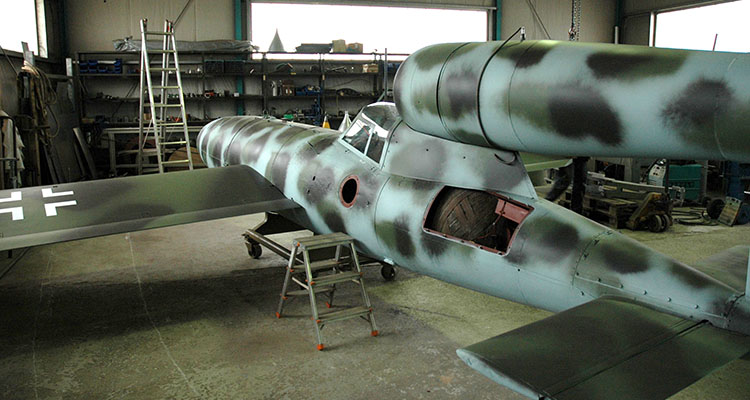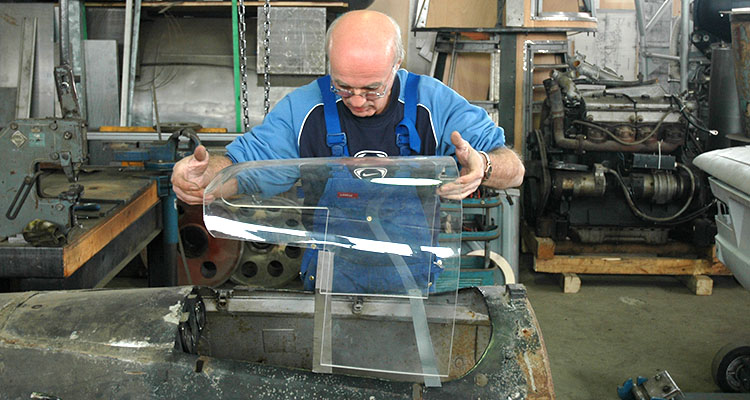In Germany, restoration work was recently completed on one of World War II’s most spine-chilling weapons
In the little Bavarian town of Geisenhausen, Germany, restoration work was recently completed on one of World War II’s most spine-chilling weapons: the V-1 Reichenberg, a piloted version of the guided, pulse-jet-powered flying bomb intended for precision attacks against bomber streams, ships and bridges. It’s one of only six examples still in existence, and bears the production number 27.
Three years ago the Reichenberg was in Alexander Kuncze’s shop in pieces. Today all those parts have been cleaned up and assembled, and the Reichenberg stands in the middle of his workshop, decked out in green-gray Luftwaffe camouflage. “This was a Wasserläufer,” Kuncze notes, “a version built to be used against ships.”
Conceived in desperation in 1944, the V-1, or Fieseler Fi-103, was launched from ramps in France to terrorize Britain. The first rocket missile, the V-2, was developed at Peenemunde and later launched at London targets from the French and Dutch Channel coasts. Late in the war, some of the more fanatical Wehrmacht officers promoted creating suicide planes by adding a pilot’s cockpit to the V-1 just ahead of and underneath the Reichenberg’s Argus pulse-jet engine. The explosive charge mounted in the nose was the same type that was used in the 15-inch shells of the battleship Bismarck.
Although Adolf Hitler and his Luftwaffe generals rejected the idea of a suicide plane as “un-German” and “unsoldierly,” the manned Reichenberg was put into production. Intended to be launched from under the wings of a Heinkel He-111, it was officially regarded as a manned missile whose pilot could parachute to safety just before it hit its target—though how this could be accomplished from an aircraft diving at more than 435 mph, with an engine pod directly behind the cockpit, is unknown. About 175 were built, and a few were tested by German pilots—including Nazi aviatrix Hanna Reitsch—but they never saw combat.
Kuncze says his Reichenberg, which was found in Tschechien, contains about 75 percent original parts. He is offering it for sale for 1 million euros (about $1.3 million). Another of his restorations, a V-2 rocket, is on display in Berlin’s Museum der Technik. His next project? To restore a 1945 Taifun anti-aircraft rocket.






